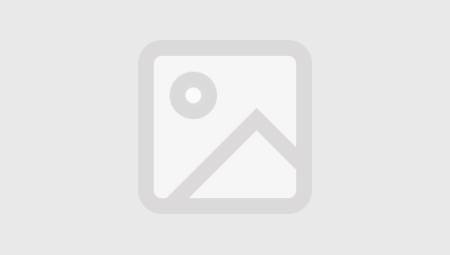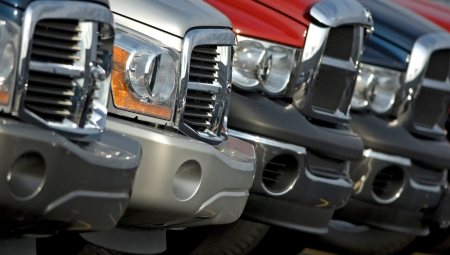From the first innovations to today's advanced technologies, vehicle comfort has undergone a remarkable transformation. This article tells the evolution of heating, ventilation and air conditioning in different car models.
By Keith Wray*
History of HVAC
Definition of amenities: Things that contribute to bodily comfort and convenience, such as a hot meal, a comfortable bed, hot water, warmth, freshness, etc.
I am so grateful to have two of those amenities in my personal vehicles and home. Air conditioning, and even factory heaters, were not always available in cars. Air conditioning in homes was not common until the 1960s. I lived in Houston long enough to know the debilitating heat and humidity. Before HVAC was affordable for homeowners, Houston's population was around 596,000. With a home where you could escape the heat and humidity, the population skyrocketed to 1.3 million by the end of the '60s.
It's also hard to believe that it wasn't until 1962 that hot water-based heaters became standard on General Motors®️ vehicles. In fact, heaters were optional in the industry until the Motor Vehicle Safety Standards required a windshield defroster starting in 1968. The only way to do that was to make heaters a standard accessory on all cars.
In previous articles, I have mentioned that my first vehicle was a 1951 Chevrolet®️ pickup truck. It had air conditioning, model 250; you opened the two side windows and you reached 50 MPH or 80 KPH. It should be noted that side windows, also known as side vents, disappeared towards the 1980s as car air conditioning became more popular.
My old truck didn't have a heater. He kept an old duvet in it for longer trips. If I had an appointment in the winter, I would bring an extra comforter.
Our ancestors heated bricks and placed them in the cabin for a little warmth. I wish I had come up with that for the old truck. Optional heaters included coal stoves, gasoline heaters, and heat exchangers around the exhaust.
Packard ® introduced a primitive form of air conditioning in 1939. Unfortunately, it didn't work that well. Firstly, the evaporator and blowing system took up half of the luggage compartment. It didn't have an adjustable thermostat; it was at full power or off. All the piping that ran from the engine to the trunk made it very inefficient. Oh, and the cost of the system was $274, with a starting price for the car of $1,099. With today's money, $274 would be $6,003!
During the '70s, almost all new cars were produced with air conditioning as standard equipment, except for Datsun ®.
Other imports, I'm sure, they shipped without A/C and then the dealership installed them as an option after someone bought the vehicle. Being of low seniority at the time, the A/C and radio installations mentioned above became my job. I got good at A/C work and definitely learned how to charge automotive air conditioning.
With today's technology, HVAC work can be one of the most cost-effective that a shop or technician can do. However, you can also be subject to a return if a full service is not performed, and a return is the biggest "profit killer" there is. The only thing worse than a return is that they never come back.
Case Study - 2014 Chrysler®️ 300:
The customer says that on hotter days, the A/C doesn't work as well as it used to when it was new. The car has more than 58,000 miles or 93,341 km. Another important clue, perhaps, is that the A/C had been serviced at a discount repair shop.
Diagnostic Strategy: Should We Check Duct Pressures and Temperatures First?
It's 80°F or 27°C in the shop.
It is 45°F or 7°C in the duct.
Low pressure = 60 PSI
High Pressure = 230 PSI
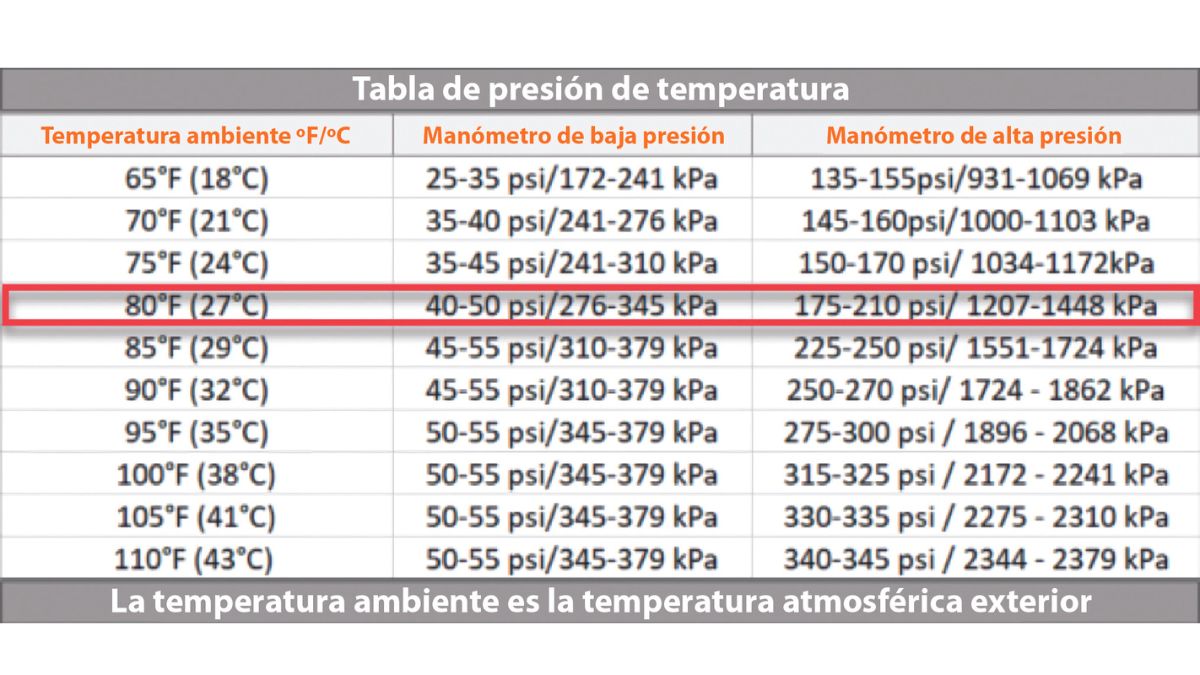
Both low and high pressures are high, right? So what could cause that?

It sounds like the cause could be an excess of coolant or air in the system, since there was some cooling in the duct, right? Remember, the customer said he wasn't cooling as well as he used to and had taken him to a discount spot. I have a feeling he was overloaded and probably still has another problem.
Today's vehicles require much more precision when charging an A/C system because they require much less refrigerant than ever before. Any system that uses less than 24 oz, or 680 grams, is considered a critical load system with an accuracy level of up to +/- 15 grams or +/- 0.5 oz, commonly considered tolerable.
Many manufacturers of air conditioning equipment push themselves to the limit and use inexpensive scales that are only accurate to +/-15 grams. Snap-on uses scales with an accuracy of +/- 10 grams to ensure that critical cargo vehicles are not overloaded, which would result in a return or no return as in this case study.
Obviously, a complete evacuation and recharging of the car's air conditioning is the first step.
New Test Results
Low Pressure = 42 PSI
High Pressure = 185 PSI
Both pressures are where they should be:
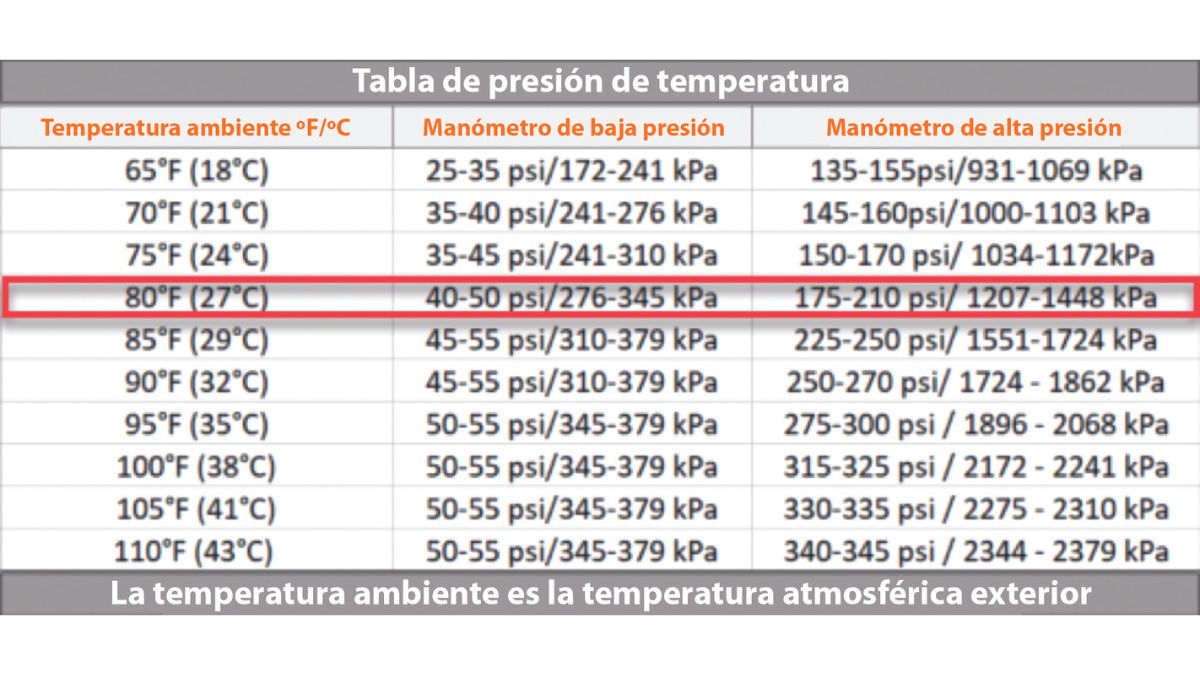
The temperature in the duct is only three degrees cooler. Not bad, but I bet on a hot day it wouldn't be as cold as it "used to be when I was new." Could we have an air distribution problem?
They say that a picture is worth a thousand words, so let's take a look at some pictures below. Using a thermal imaging camera with the A/C at maximum and the mixing doors set up in the vents of the dashboard, we took this image showing the culprit.
Towards the bottom of the image, we see two dashboard grilles to the right of the steering wheel (see the green squares) and three defrosting grilles on top of the dashboard (see the green circles). There shouldn't be cold air hitting that hot windshield, right? The hot glass will heat that cold air before it reaches the passengers. In fact, on hotter days, this A/C wouldn't cool as much as it used to when it was new.
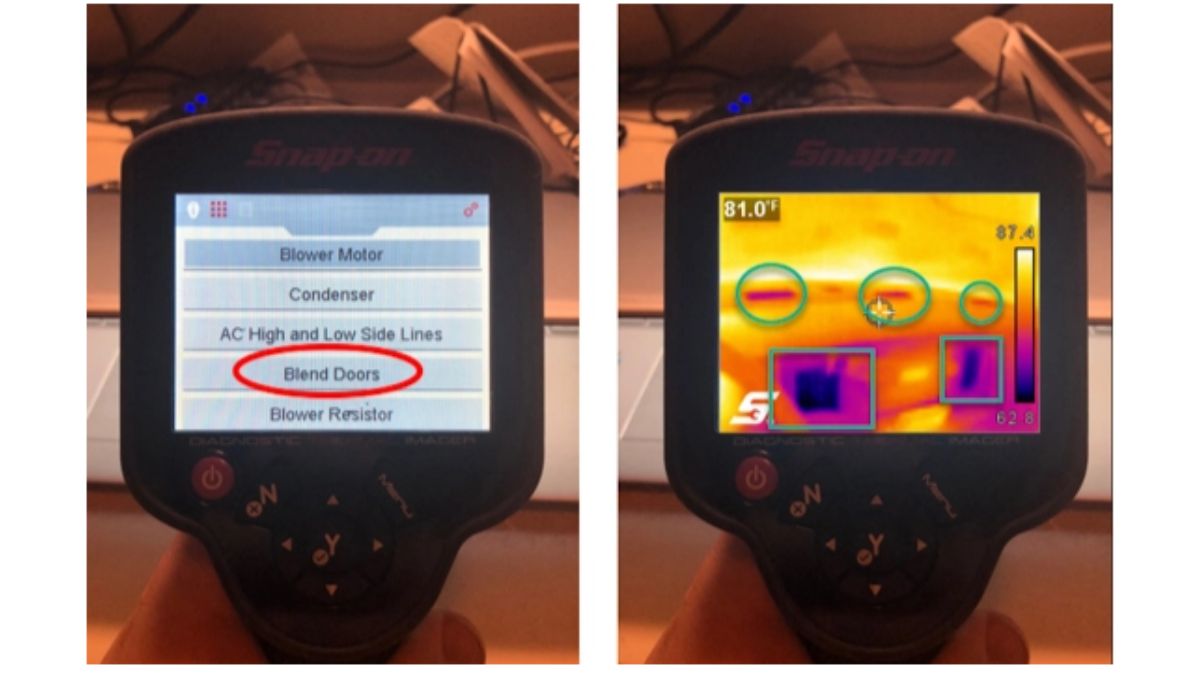
Now, the mixing gate actuator is bad or out of calibration, which is quite common in certain OEMs. Let's get a scan tool and see what we can do.
The screenshot below, taken from a Zeus+, shows that there is a recalibration function that should solve the problem by making sure that the mixing door closes completely in the position of the board vent. If the calibration fails, it indicates a bad actuator or something obstructing the door.

To finish this case, a great habit to have with any HVAC repair is to replace the cabin air filter. Restricted airflow is always a common cause of inefficient A/C.
Keith Wray, Snap-on® National Training Manager.



